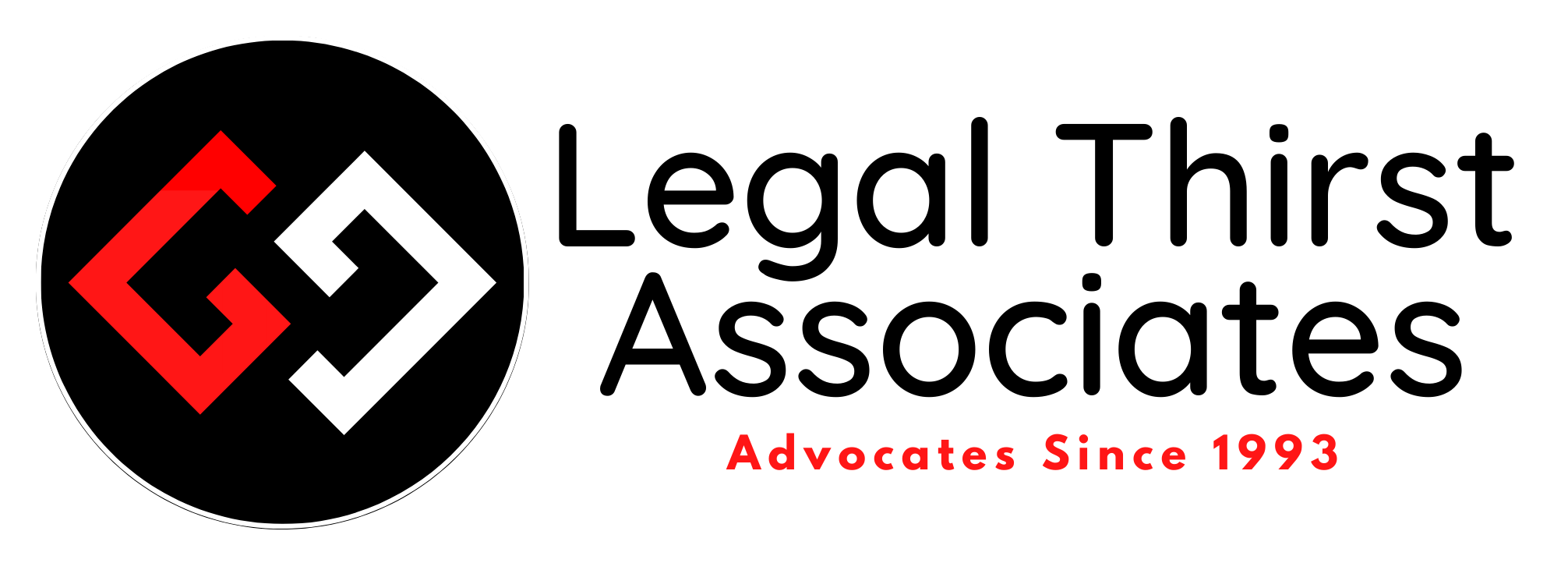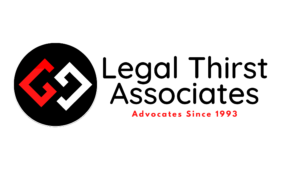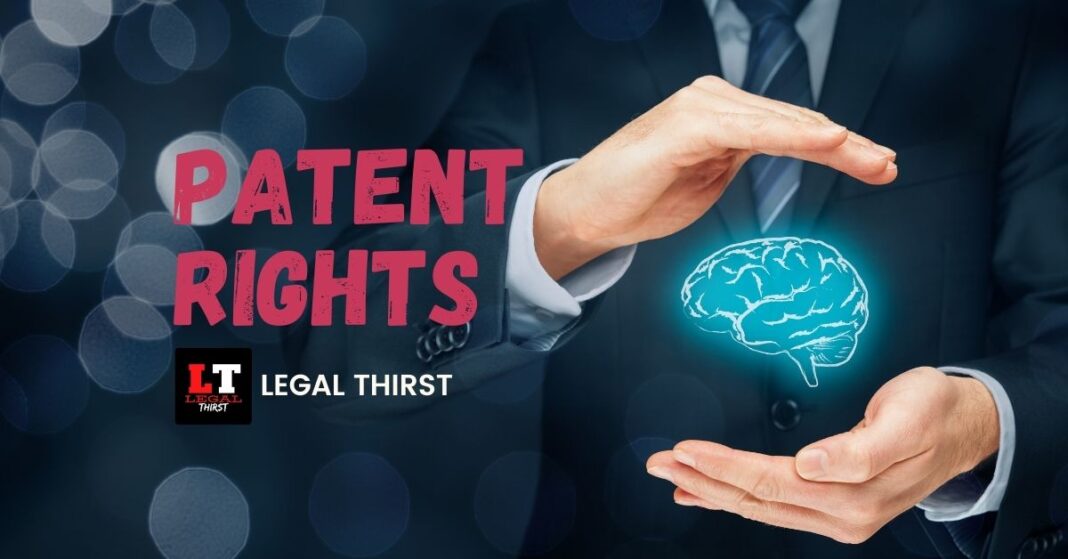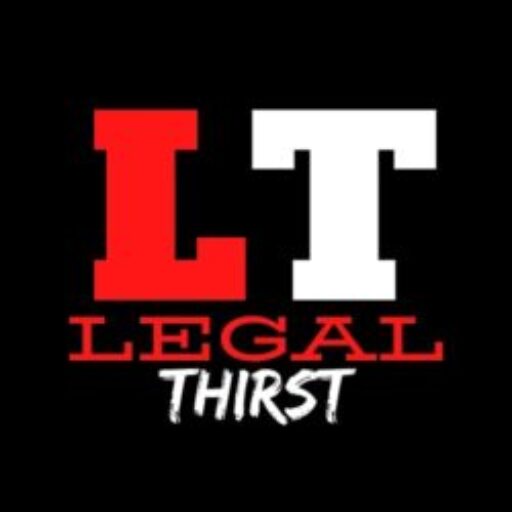This article on “Patent rights in the Indian Legal System” is written by Vidhi Dusad. She is an intern under the Content Team of Legal Thirst. She covered every aspect of Patentee Rights in India.
Table of Contents
Introduction
A patent is exclusively granted by the Government to the creator to stop others to use; creating, and changing an invention for a specific period of time. It is also available for enhancement in their former Invention. The main aim to legislate patent law is to cheer formulators to contribute more in their field by rewarding them complete rights for their own inventions. In other terms, the patent is generally appertained to as the right given to a creator; for his Invention of any latest, helpful, non-obvious process, machinery, the composition of manufacture, or composition of matter. The word “ patent” is derived from the Latin term “patere” which means “to lay open,” i.e. to make available for public examination.
Things that can get a patent:
Sections 3 and 4 of the Indian Patents Act, 1970 give us the list of things that can be patented in India. There are certain obligations that have to be fulfilled to gain a patent in India. They are —
Patent subject
The most important application is to determine whether the Invention is worthy enough for a patent. Sections 3 and 4 of the Patents Act list the non-patentable things. Unless the Invention comes under any provision of Section 3 or 4, which means that it can obtain a patent.
Novelty
Transformation is an important criterion in determining the patent potential of an invention. Under Section 2 (l) of the Patent Act, a novelty or new Invention is defined as “no invention or technology published in any document before the date of the form of a patent operation, anywhere in the country or the world”. The complete specification, that is, the subject matter has not fallen into the public sphere or isn’t part of state of the art”.
Capable of industrial application:
Industrial application is defined in Section 2 (ac) of the Patents Act as “ the invention is able of being made or used in an assiduity”. This principally means that the Invention can not live in the synopsis. It must be able of being applied in any manufacturing quarter, which means that it must provide practical satisfaction with respect to the patent.
Rights of patentee:
Right to exploit patent:
A patentee has the complete right to make use, exercise, vend, or distribute the patented composition of matter in India; or to use or exercise the system or process if the patent is for a person. This right can be used either by the patentee himself or by his agent or agents. The patentee’s rights can be brought to play only when a patent exists.
Right to grant license:
The patentee has the power to transfer rights or entitlement licenses or enter into some other arrangement for consideration. A license or project must be in written form and registered with the Controller of Patents, for it to be licit and valid. The document assigning a patent is not considered as an affirmation to the title unless and until it is registered and this is applicable to the person it is assigned not by who kit is assigned.
Right to Surrender:
A patentee has the right to give up his patent, but before accepting the offer of surrender, a notice of turnover is given to a person whose name is entered in the register as that person is having an interest in the patent and its functioning, if any, considered. The letter of surrender is also published in the Official Gazette to allow interested persons to repel.
Right to sue for violation:
The patentee has a right to launch proceedings for violation of the patent in a District Court having governance to try the suit.
Obligations of patentee Government use of patents:
A patented invention may be used or indeed acquired by the Government, for its use only; it is to be kept in mind that the Government may also circumscribe or enjoin the application of the patent under special circumstances. In the case of a patent related to any of a drug or medicine, it may be obtained by the Government for its own use or for its distribution in the country or other medical institution run by or on behalf of the Government. The above-mentioned can be done without the permission of the patentee or payment of any royalties.
Mandatory licenses:
If the patent has not worked up to the mark set then the government can give this patent to anyone to make it work. A mandatory license is a provision under the Indian Patent Act that gives power to the Government to ask a general medicine maker to manufacture affordable drugs in the public interest even when the patent of that product is valid. Mandatory licenses may also be taken in respect of affiliated patents where one patent can not be used without using the affiliated patent.
Cancellation of patent:
A patent may be abandoned in cases where there has been no work or wrong result to the demand of the public in respect of the patented invention.
Restored Patents:
Once lapsed, a patent may be restored, known that many restrictions are urged on the patentee. When the violation was made between the period of the date of violation and the date of the announcement of the application for restoration, the patent has no authority to take action for violation.
Procedure of Patent
Step 1: Write about inventions in a very detailed manner.
Collect all information about your Invention similar
- Field of Invention
- What does the Invention describe
- How does it work
- Benefits of Invention
You should bring reports or your research papers with you while getting a patent which is signed by you if you did some experimentation while working on the product.
Step 2: It must involve an illustration, diagram, and sketch that explains the Invention
Pictures and pictures should be designed so that the product information can be explained more effectively with the help of visuals. They play an important part in patent operations.
Step 3: To check whether the Invention is a patentable subject or not.
Not all inventions can be patentable, as per the Indian Patent Act except some which are labeled as non – patentable.
Step 4: Patent Discovery
The coming step will be to find out if your Invention meets all patent criteria as per the Indian Patent Act-
- The invention must be the latest.
- The invention must be non-obvious.
- The Invention must have manufacturing obligations.
Step 5: File Patent Application
If you are at starting stage of research then you can have a provisional application as it has benefits like-
- Form date:12 months’ time for filing full specification.
- Lower cost: After filing a provisional operation, you secure the form date, which is veritably important in the patent world. You get 12 months to come up with the complete specification or your patent application will be removed at the end of 12 months.
When you have completed the needed documents and your exploration work and you stand at a place where you have all results and needed answers so that at the time you can apply for a specific patent application. Filing the provisional specification is a voluntary step if you’re in the stage where you have complete knowledge about your Invention that can go to the final step of specification.
Step 6: Publication of the application
After filing the complete specification along with the application for the patent, it will take 18 months to publish it. Still, an original publication request may be made with the specified figure, If you don’t wish to stay until the expiration of 18 months from the date to publish your patent operation. The application is generally published beforehand as a one-month form request.
Step 7: Request for Examination
The patent application is scanned only after entering a request for an RFE examination. After entering this request, the Controller gives your patent application to a patent monitor who examines the validity of the patent on the following grounds-
- Patent subject
- Freshness
- Lack of clarity
- Inventory steps
- Artificial application
- By enabling
The monitor makes the first examination report of the patent application based upon a review of the above-mentioned points. This is called patent execution. Everything that happens for a patent application before the entitlement of a patent is generally called patent execution.
The first examination report submitted to the Controller by the monitor generally includes previous art that is analogous to the claimed invention and is also reported to the patent aspirant.
Step 8: Answer the exceptions
Most of the patentees will get some complaints regarding their patent as per the examination report. It is suggested to read the report with a professional and go through all the rejections. This is an occasion for an investor to communicate his novelty over the previous art in examination reports.
Step 9: Solving the complaints
The Controller and the patent aspirant both should ensure that the patent has no relations to previously issued patents and all the complaints relating to that have been resolved. Upon entering a patent application in order for entitlement, it’s the first entitlement for a patent aspirant.
Step 10:
Once all patent conditions are met, the application will be placed for the entitlement. The entitlement of a patent is notified in the Patent Journal, which is published periodically. Authorities for patents
The Controller of Patents is considered the top officer responsible for administering the patent system in India. Officially, the patent has its head office in Kolkata (Calcutta). Patents granted under the Patents Act and other officers of the Patent Office discharge their functions
under the direction or regulation of the Controller.
Patent violation
Patent violation is a violation that involves the unauthorized use, product, trade, or offer of trade of the subject matter or Invention of another’s patent. There are numerous different types of patents, similar as mileage patents, design patents, and factory patents. The introductory idea behind patent violation is that unauthorized parties aren’t allowed to use patents without the proprietor’s authorization.
When there’s a violation of the patent, the court basically compares the matter included under the patent with the used content by the “infringer”, a violation occurs when the infringer Uses patent material as same as its proprietor’s. Patent violation is an act of any unauthorized manufacture, trade, or use of a patented invention. Patent violations may occur directly or indirectly.
Remedies
Patent violation suits can affect in consequently advanced losses than other types of suits. Some laws, similar to the Patent Act, allow complainants to recover damages. Patent violation is the illegal manufacture or application of an invention or enhancement of someone application who owns a patent issued by the Government, without taking the proprietor’s permission for a license or disclaimer. Several remedies are available to patent possessors in the event of a violation. Measures available in patent violation action may include financial relief, equal relief, costs, and attorneys’ freights.
Disclaimer: The opinions and views in the articles and research papers published on this website; are personal and independent opinions of the author. The website is not responsible for them.
Legal Thirst has created a telegram group for exchanging legal knowledge, Events, and various opportunities.
You can click on this link and join:
Follow Legal Thirst on Instagram and Subscribe to our YouTube channel for more amazing legal content.



